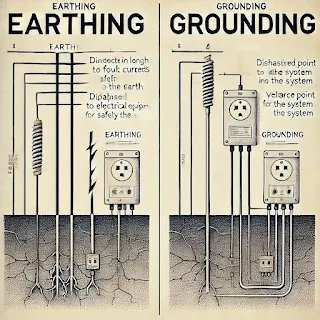Definition of earthing and grounding
The terms "earthing" and "grounding" are often used interchangeably, but they have subtle differences based on their usage in electrical systems:
1.Earthing:
Definition:
Earthing refers to the physical connection of electrical equipment or systems to the earth's conductive surface, typically through a conductor.
Purpose:
The main purpose of earthing is to protect humans and equipment from electrical shocks by providing a path for fault currents to flow directly into the ground.
Usage:
Commonly used in British and European standards.
Application:
Earthing is specifically used for connecting the non-current carrying parts of the equipment (like the metal casing) to the earth.
2. Grounding:
Definition:
Grounding refers to connecting electrical circuits to a reference ground, usually the earth, but it can also refer to connecting to a common point like the chassis of equipment.
Purpose:
Grounding is done to ensure the proper functioning of the electrical system by maintaining a reference voltage level, and it helps in stabilizing voltage during faults or surges.
Usage:
More commonly used in American standards.
Application:
Grounding usually involves the current-carrying parts of the system, such as the neutral wire in an AC circuit.
Key Difference:
While both terms involve connections to the earth, earthing is focused on safety and preventing electric shocks, whereas grounding ensures system stability and proper functioning.





.webp)
No comments:
Post a Comment